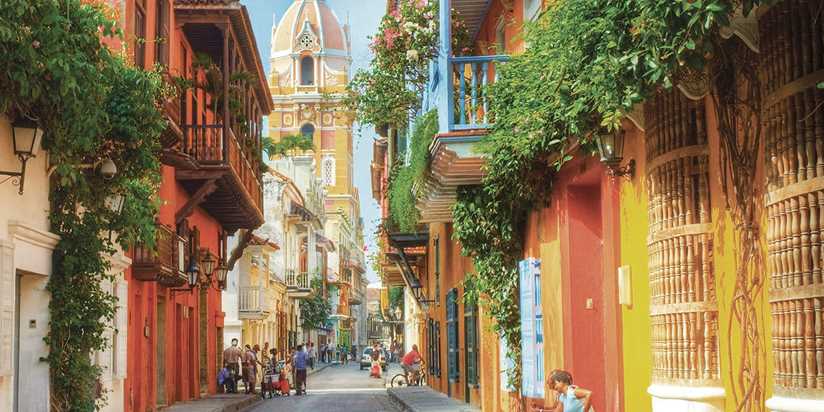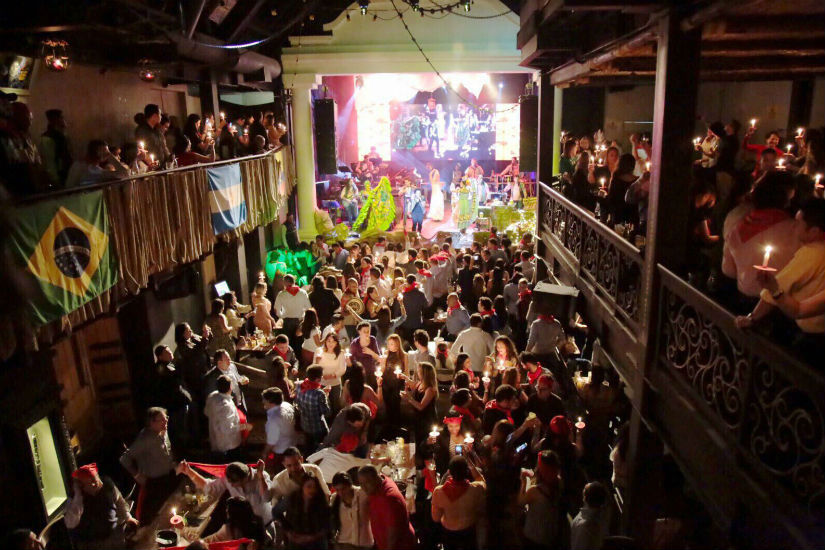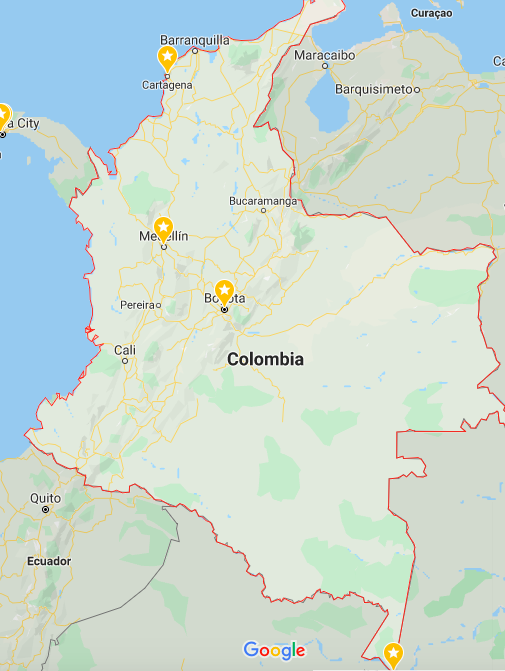
**Update** Colombia will lift the “Reciprocity Fee” for all Canadian tourists entering Colombia, effective 1 May 2019, so there will not be any payment of COP200 000 for Canadian passport holders.
Cartagena de Indias is the undisputed queen of the Caribbean coast, a fairy-tale city of romance, legends and superbly preserved beauty lying within an impressive 13km of centuries-old colonial stone walls. Cartagena’s Old Town is a Unesco World Heritage site – a maze of cobbled alleys, balconies covered in bougainvillea, and massive churches that cast their shadows across leafy plazas.



It was our first stop in Colombia and our flight arrived around 10.30pm local time at Cartagena airport, after a short flight of one hour from Panama City. Since it was night time, we could not see much of the city and headed straight to the hotel. The taxi fare from the airport was quite expensive, at 15 000P (~S$7) for a short 4km ride. There was no other choice and I did not manage to get a data card, otherwise we would have called an Uber. There was also no free wifi connection at the small airport. My friend, being a Canadian passport holder, had to pay 200 000P (~S$100) upon arrival as a reciprocity fee for the visa charges imposed by Canada on Colombian citizens. For Singapore passport holders, the visa is free of charge and we can stay for up to 90 days in the country.


During the day, do visit the walled Old City, with women carrying fruit baskets on their heads dressed in colourful costumes, musicians playing on the streets, hawkers selling souvenirs by the roadside and construction going on. There are several discoloured dilapidated buildings in the middle of the old city that gives rise to the unique characteristics, not forgetting the colourful buildings with coloured wooden doors. It is an eclectic mix of old crumbling buildings with new restored ones. But for every ancient building, you are likely to encounter a camera-welding tourist standing outside. There are also several touts trying to sell you drugs, so be prepared to say no several times to these touts or just turn a blind eye to their presence.


From any street in the old town quarters, the St Catherine of Alexandra cathedral would be visible from afar, being the tallest building in the area. Work on this cathedral began in 1575, but in 1586, while still under construction, it was partially destroyed by the cannons of Francis Drake, and was not completed until 1612. Alterations were made between 1912 and 1923 by the first archbishop of Cartagena, who covered the church with stucco and painted it to look like marble. Today it is the landmark of the old town.


On the outskirts of the Old Town, it is surrounded by Las Murallas, which are made of thick walls built to protect it. Construction works began toward the end of the 16th century after the attack by Francis Drake; until that time, Cartagena was almost completely unprotected. The project took two centuries to complete, due to repeated storm damage and pirate attacks. It is possible to walk along large stretches of these magnificent structures, with wonderful sea views and a cooling breeze from the the northern and western sides. Today the old walls provide a barrier between the road and further afar you can see the waves crashing along the coast.


Atop a hill, the Castillo de San Felipe de Barajas stands prominently. This is the greatest fortress ever built by the Spaniards in any of their colonies and it still dominates an entire section of Cartagena’s cityscape today. It should definitely be your first choice of fortresses to visit. It was truly impregnable and was never taken, despite numerous attempts to storm it. Go there to see this impregnable fortress with your own eyes.





In the evenings, the Old City is at its best. The hawkers and tourists roll away as the sun sinks behind the wall, casting a golden hue over the pastel buildings. You cannot drink in public, but you also would not want to miss out on the magnificent sunset. So grab a seat at the open-air Cafe Del Mar, which has a fantastic position on the city wall and overlooks the Caribbean sea. During the day, the restaurant hosts a sort of early-2000s rave, and the cocktails are not the city’s greatest, but get there early enough to catch the sun set, and the ocean breeze and screen saver-worthy view will make it all worthwhile.

For those looking for a bit of peace and serenity, head to Getsemani. It belongs to the outer walled town, which is less obviously impressive than Cartagena’s old city but has some charming parts and is well worth exploring. In recent years it has been the focus of Cartagena’s exploding gentrification and growing hotel industry, and boasts excellent bars, restaurants and cafes, as well as some superb street art on its derelict buildings. We went to a food truck place for dinner with a local and it had a real cool ambience.


Although Cartagena is known for its beaches, it is actually not in the main city itself. The beaches that we saw were dirty and unappealing. Instead, most tourists take a ferry to one of the outlying islands (Isla de Tierra Bomba, Playa Blanca, Rosario Islands) or you could also take a public bus which would bring you to the next town along the coast for some nicer beaches. The ferry is a faster way than the bus.


Other than the Old town, we felt that Cartagena was not really interesting for us and we did not want to waste time/ money traveling to another island for the beach. I wish that Cartagena had more accessible beautiful beaches within walking distance of the city, such as like in Boracay or Phuket.



